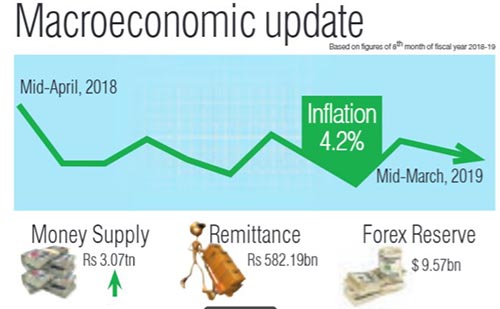Trade deficit remains cause for concern
While remittance inflow improved in the first eight months of the current fiscal, the ballooning trade deficit of the country remains a cause for concern.
The macroeconomic update of the central bank published today shows that remittances increased 23.4 per cent to Rs 582.19 billion in the review period compared to an increase of 4.9 per cent in the same period of previous year.
At the same time, however, the country’s trade deficit between mid-July, 2018 to mid- March, 2019 widened by 24.5 per cent to Rs 887.88 billion.
The export-import ratio declined to 6.5 per cent in the review period from seven per cent in the corresponding period of the previous year, as per the report.
Merchandise exports increased 14.6 per cent to Rs 61.22 billion compared to a growth of 10.8 per cent a year ago. But at the same time, merchandise imports surged by 23.8 per cent to Rs 949.11 billion compared to a rise of 22 per cent in the same period of the previous year.
Gross foreign exchange reserves stood at Rs 1,061.71 billion as at mid-March 2019 from Rs 1,102.59 billion as at mid-July 2018, as per Nepal Rastra Bank. “Based on the imports of eight months of current fiscal year, the foreign exchange holdings of the banking sector is sufficient to cover the prospective merchandise imports of 9.1 months, and merchandise and services imports of 7.9 months,” reads the report.
Balance of payments remained at a deficit of Rs 58.99 billion in the review period compared to a deficit of Rs 24.73 billion in the same period of the previous year.
Government spending based on banking transactions increased by 2.6 per cent to Rs 519.58 billion whereas revenue collection went up by 21.1 per cent to Rs 520.79 billion.
Deposits at banks and financial institutions (BFIs) increased by 9.7 per cent in the review period. Credit to the private sector from BFIs increased 14.6 per cent in the review period compared to a growth of 14.4 per cent in the corresponding period of the previous year.






